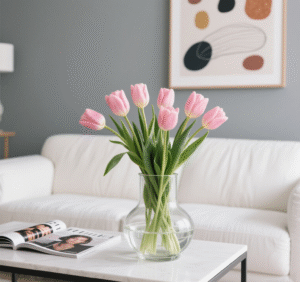This post may contain affiliate links which means we may receive a commission at no cost to you, if you make a purchase through a link. Please see our full disclosure for further information.
A good cup of coffee starts with knowing what you like. Do you prefer bold shots or creamy sips? Your Guide to Coffee Types and Brewing breaks this down simply. It covers the most popular coffee kinds, how to make them at home, and the tools you need. Whether you’re a beginner or a casual drinker, this guide helps you brew better coffee every time.
Popular Coffee Types
Not all coffee tastes the same. These are the kinds you’ll find in cafes and can make at home—Your Guide to Coffee Types and Brewing highlights the easiest ones first.
1. Black Coffee
Black coffee is just ground coffee and hot water. No milk, no sugar. It’s strong and lets the coffee’s natural flavor shine. You can make it with a drip machine or pour-over tool.
2. Latte
A latte mixes 1 shot of espresso with lots of steamed milk. It has a thin layer of foam on top. It’s creamy and mild—great for people who don’t like bitter coffee.
3. Cappuccino
Cappuccino is 1 shot of espresso, equal parts steamed milk and foam. It’s thicker than a latte. It often gets a sprinkle of cocoa or cinnamon on top.
4. Americano
Americano is espresso mixed with hot water. It’s similar to black coffee but has a smoother, richer taste. You can adjust the water amount to make it stronger or weaker.
How to Brew Coffee at Home
Brewing coffee doesn’t need to be complicated. Your Guide to Coffee Types and Brewing picks 3 easy methods for beginners.
1. Hand-Pour (Pour-Over)
Hand-pour coffee tastes clean and bright. Here’s how to do it:
- Heat water to 195–205°F (90–96°C).
- Place a filter in a pour-over cone and rinse it with hot water.
- Add 2 tablespoons of ground coffee (medium-fine grind) to the filter.
- Slowly pour hot water over the coffee, starting from the center and moving outward.
- Let the coffee drip into a cup. It takes about 2–3 minutes.
2. Espresso (For Lattes/Cappuccinos)
Espresso is a concentrated shot—you need an espresso machine for this:
- Grind coffee beans to a fine texture (like sand).
- Pack the ground coffee into the machine’s portafilter firmly.
- Lock the portafilter into the machine and press the button.
- The machine will pull a 1-ounce shot in 25–30 seconds.
3. French Press
French press makes bold, full-flavored coffee. It’s easy for beginners:
- Add 4 tablespoons of coarsely ground coffee to the press.
- Pour hot water (195–205°F) over the coffee and stir.
- Put the lid on (don’t press the plunger yet) and let it sit for 4 minutes.
- Press the plunger down slowly to separate the grounds from the coffee.
Must-Have Coffee Tools
You don’t need fancy gear, but these tools make brewing easier—Your Guide to Coffee Types and Brewing lists the essentials.
1. Coffee Grinder
Whole beans stay fresh longer. A grinder lets you grind beans right before brewing. Look for a burr grinder—it grinds beans evenly, which makes better coffee.
2. Kettle (With Temperature Control)
Water temperature matters. A temperature-controlled kettle lets you set it to 195–205°F, the sweet spot for most coffee.
3. Measuring Spoons/Cup
Too much or too little coffee ruins the taste. Use a 2-tablespoon measuring spoon for grounds. A measuring cup helps you add the right amount of water.
4. Filter (For Drip/Hand-Pour)
Paper filters catch coffee grounds. They make your coffee clean and free of sediment. Rinse them with hot water first to remove any paper taste.
Pro Tips for Better Coffee
Small tweaks make a big difference. Your Guide to Coffee Types and Brewing shares these easy hacks:
- Use fresh beans. Beans go stale 2–4 weeks after roasting. Check the roast date on the bag.
- Grind beans right before brewing. Pre-ground coffee loses flavor fast.
- Don’t overheat water. Water that’s too hot (over 205°F) burns the coffee, making it bitter.
- Clean your tools. Rinse your French press or pour-over cone after each use. Old grounds make new coffee taste bad.
Why This Guide Works
Your Guide to Coffee Types and Brewing keeps things simple. It skips confusing jargon and focuses on what you can actually do at home. Whether you want a quick black coffee or a creamy latte, you’ll find steps that work.
With the right coffee type, method, and tools, you can make cafe-quality coffee without leaving your kitchen. Give it a try—your morning cup will taste better than ever.
Uncover further inspiration in our blog.
European Coffee Trip | Your Speciality Coffee Guide in Europe
40 Cafes For The Best Coffee in Europe
TOP 100 Coffee Shops















